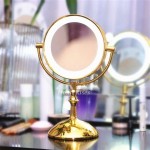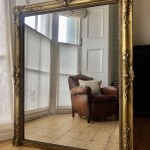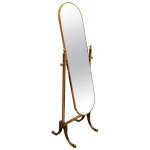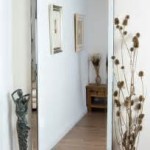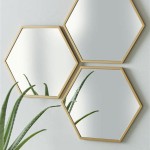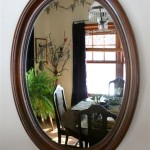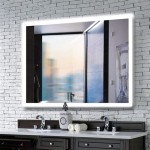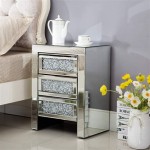Kids Stand Up Mirrors: A Guide for Parents and Educators
A kids stand-up mirror is more than just a reflective surface; it serves as a valuable tool for development and play. From fostering self-awareness to encouraging imaginative play, these mirrors offer numerous benefits for children of various ages. This article will explore the advantages, types, safety considerations, and creative uses of kids stand-up mirrors in homes and educational settings.
Developing Self-Awareness and Body Image
Children develop a sense of self through interaction with their environment, and mirrors play a crucial role in this process. A stand-up mirror allows children to observe their own reflections, learn about their physical features, and understand how their bodies move and change. This visual feedback is essential for developing body awareness, coordination, and a positive self-image. For infants and toddlers, simply observing their reflection can be a fascinating and stimulating experience, contributing to their cognitive development.
Enhancing Motor Skills and Coordination
Standing in front of a mirror allows children to practice and refine their motor skills. They can observe themselves making faces, dancing, dressing, and engaging in other physical activities. This visual feedback helps them understand the connection between their movements and the resulting reflection, promoting the development of gross and fine motor skills. For example, a toddler learning to walk can use a mirror to observe their balance and gait, while an older child can practice dance moves or sports techniques.
Encouraging Imaginative Play and Role-Playing
Kids stand-up mirrors can be a catalyst for imaginative play and role-playing. Children can pretend to be different characters, practice social interactions, and create their own stories while observing themselves in the mirror. This type of play fosters creativity, emotional expression, and social-emotional development. A simple mirror can transform into a stage, a shop counter, or a magical portal, limited only by the child's imagination.
Types of Kids Stand-up Mirrors
Kids stand-up mirrors come in various shapes, sizes, and materials. Some common types include:
- Full-length mirrors: These provide a complete view of the child's body, making them ideal for dressing up, dancing, and practicing movements.
- Adjustable mirrors: Mirrors with adjustable heights and angles cater to children of different ages and sizes, ensuring optimal viewing angles.
- Safety mirrors: These mirrors are made from shatterproof materials like acrylic, minimizing the risk of injury in case of accidental breakage.
- Activity mirrors: Some mirrors incorporate interactive elements like lights, sounds, or attached toys, providing additional stimulation and engagement.
- Wooden or plastic framed mirrors: These provide durability and aesthetic appeal, blending seamlessly with different room decors.
Safety Considerations
Safety is paramount when choosing and using a kids stand-up mirror. Parents and educators should prioritize shatterproof materials and ensure the mirror is securely mounted or has a stable base to prevent tipping. Regularly inspect the mirror for any damage or loose parts, and supervise young children during use. Placing the mirror in a safe, designated area can further minimize the risk of accidents.
Choosing the Right Mirror
Selecting the appropriate mirror depends on the child's age, developmental stage, and intended use. For younger children, a smaller, shatterproof mirror with rounded edges is recommended. Older children may benefit from a larger, adjustable mirror for practicing activities like dressing and grooming. Consider the available space and the overall aesthetic of the room when making your selection.
Incorporating Mirrors in Educational Settings
Kids stand-up mirrors are valuable additions to classrooms, daycare centers, and therapeutic settings. They can be used for various educational activities, including:
- Developing language skills: Children can practice making sounds, forming words, and expressing emotions while observing their facial expressions.
- Promoting social interaction: Mirrors can facilitate group activities, allowing children to interact with each other and observe their shared reflections.
- Supporting sensory exploration: Mirrors can be incorporated into sensory play areas, providing visual stimulation and encouraging self-discovery.
By understanding the benefits and various uses of kids stand-up mirrors, parents and educators can effectively utilize these tools to support children's development and create engaging learning experiences.

Haus Projekt Children S White Wooden Free Standing Dress Up Mirror Handmade Dressing Kid Bedroom Furniture Girls Gift

Haus Projekt Children S White Wooden Free Standing Dress Up Mirror Handmade Dressing Kid Bedroom Furniture Girls Gift

Homcom Full Length Mirror For Children Adjustable To Be Viewed From Multiple Angles Dress Up And Make White Com

Homcom Full Length Mirror For Children Adjustable To Be Viewed From Multiple Angles Dress Up And Make White Com

Kids Full Length Wooden Standing Mirror With Bottom Shelf And Foldable Storage Bin Costway

Haus Projekt Dress Up Rail Mirror Set For Children Girl S White Wooden Clothing Rack And Handmade Kids Nursery Furniture

Children S Free Standing Mirror Mirrors Sensory Edusentials

Utex Kids Full Length Mirror Free Standing Wooden Dressing With Adjustable Viewed Girl S Vanity Dress Up Storage For 3 7 Years Old White Com

Kids Freestanding Full Length Dressing Floor Mirror With Shelf Storage Bin White

Standing Children S Vanity For Make Up And Dress Includes Storage Shelf 1 Unit Fry Food

